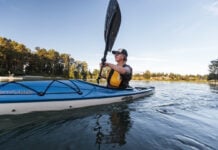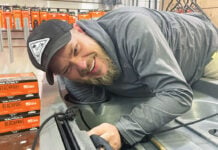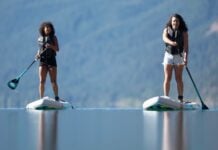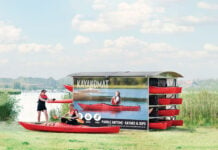AQ Outdoors is facing a challenge many paddling businesses have been familiar with in recent years. While retail sales have skyrocketed, businesses have struggled to find the high-quality staff needed to successfully operate their paddling programs.
Simon Coward started at AQ Outdoors as an instructor himself in 2005, purchasing the overall business in 2009 and leading it ever since. Coward acknowledges staffing issues were creeping in before the global pandemic, but then worsened abruptly, spanning across service industries.
To change the trajectory, Coward and the team at AQ Outdoors had to take an inward look at what it means to work as an instructor at AQ Outdoors, and how to evolve as an employer to stand out in the competitive market of today. That also meant evolving how they reach prospective employees—namely, using the medium of video across various platforms to interact with future instructors in an authentic and engaging way.
We sat down with Coward to hear how as an independent paddling business AQ Outdoors is changing its relationship with employees, and hoping for a recruiting campaign that goes viral.
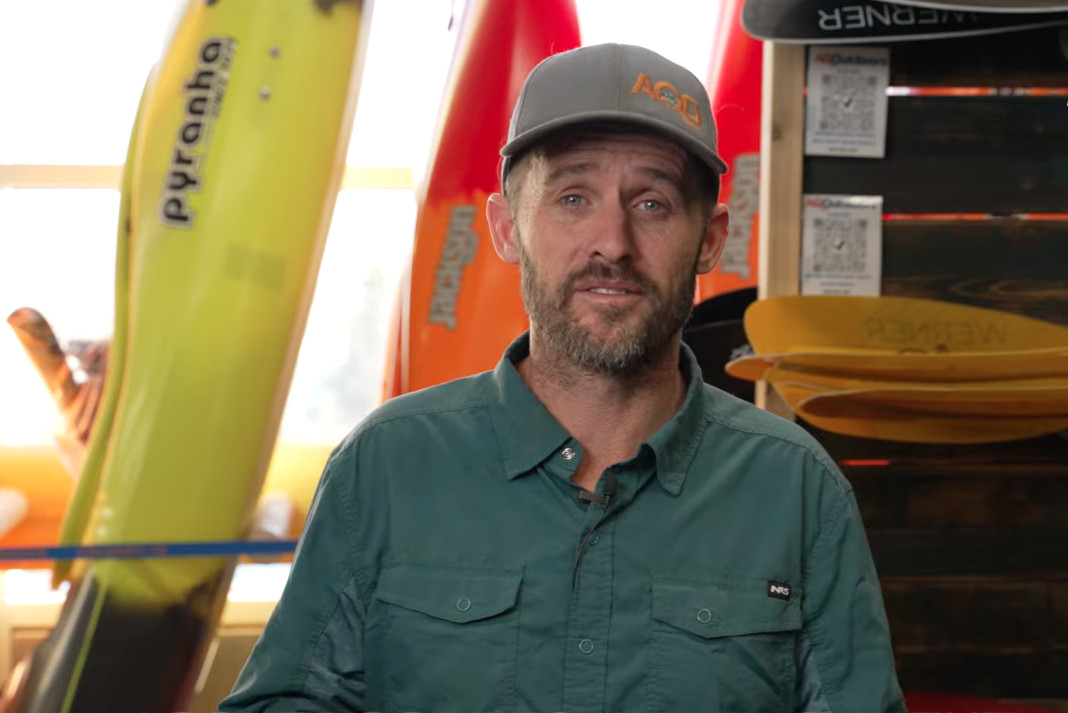
Paddling Business: Across the outdoor industry, there have been challenges in terms of staffing. What have these challenges looked like specifically for AQ Outdoors?
Simon Coward of AQ Outdoors: The biggest challenge for us has been finding people who want to do the job for more than a season. Leading up to COVID, we had pretty good staff retention. From 2005 to about 2012, we had amazing staff retention. We basically had the same team come back for up to 10 years. But after that, it became more of a revolving door of staff. People were coming in and doing a season or two, then leaving. We built our program around a pretty highly technical kind of progression. So it was built around having returning staff.
The challenges started before COVID on a more minor scale. Then COVID presented some big challenges. We’ve typically relied on New Zealanders to come out because they get two-year working holiday visas, and there are a lot of young instructors looking to get some more experience. We would have young Kiwis come out and work for us. So from 2005 until pre-COVID, we were largely staffed with Kiwis.
It wasn’t necessarily by choice, it was an availability thing. We just had a really hard time finding Canadian instructors. Conversely, the shop has had really great staff retention through the whole period.
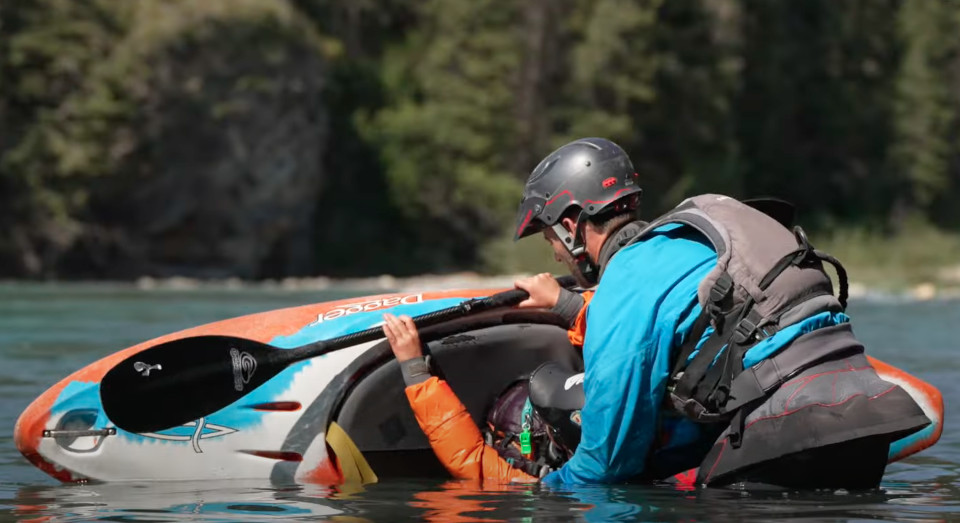
Upon some reflection, previously we were providing a lot more learning opportunities for our young instructors, working with them and upskilling them, and having them work with mentors. As the shop grew, my resources shrunk and I got pulled into that direction because it’s the bigger part of the business. So the emphasis on training and learning opportunities up until this day, up until three months ago when we identified this, has been lacking.
I can only speculate that is a big part of why we haven’t seen staff retention. It’s not that people aren’t doing a great job, because they are. It’s not that they’re not engaged while they’re here. I just don’t think they’re seeing the benefits of growth that we provided so much of once upon a time. We’ve steadied the ship in the shop. We’ve got a great management team providing people with lots of mentorship and learning opportunities there. Now we have to steady the ship in the kayak school side.
PB: How do you as the owner of an outdoor business change course to provide a model to draw the caliber of instructors AQ Outdoors needs to be successful?
SC: We were chatting with one of our shop staff and she kind of tied a bow on it and said, “Look, the shop staff sticks around because the management team treats us with respect. We get lots of opportunities to learn more. We’re constantly being engaged and it feels much more like a career development role than a retail role.” At that point I went, “Oh man, we’re treating our instructors with a great deal of respect and give them training at the start, but once they get into the season, it’s just go, go, go. We don’t create space for those training opportunities or learning opportunities.”
We’re giving a renewed commitment to training and seeing if that is indeed the secret sauce. Having good in-depth staff training at the start. Making sure when we have our staff functions instructors aren’t teaching. Offering ongoing training throughout the season. Maybe bringing in external people such as the provincial slalom coach or someone to give them different insight into paddle sports. There’s always going be a bit of give and take in the outdoors, but hopefully we can create more of a give and take rather than a take relationship.
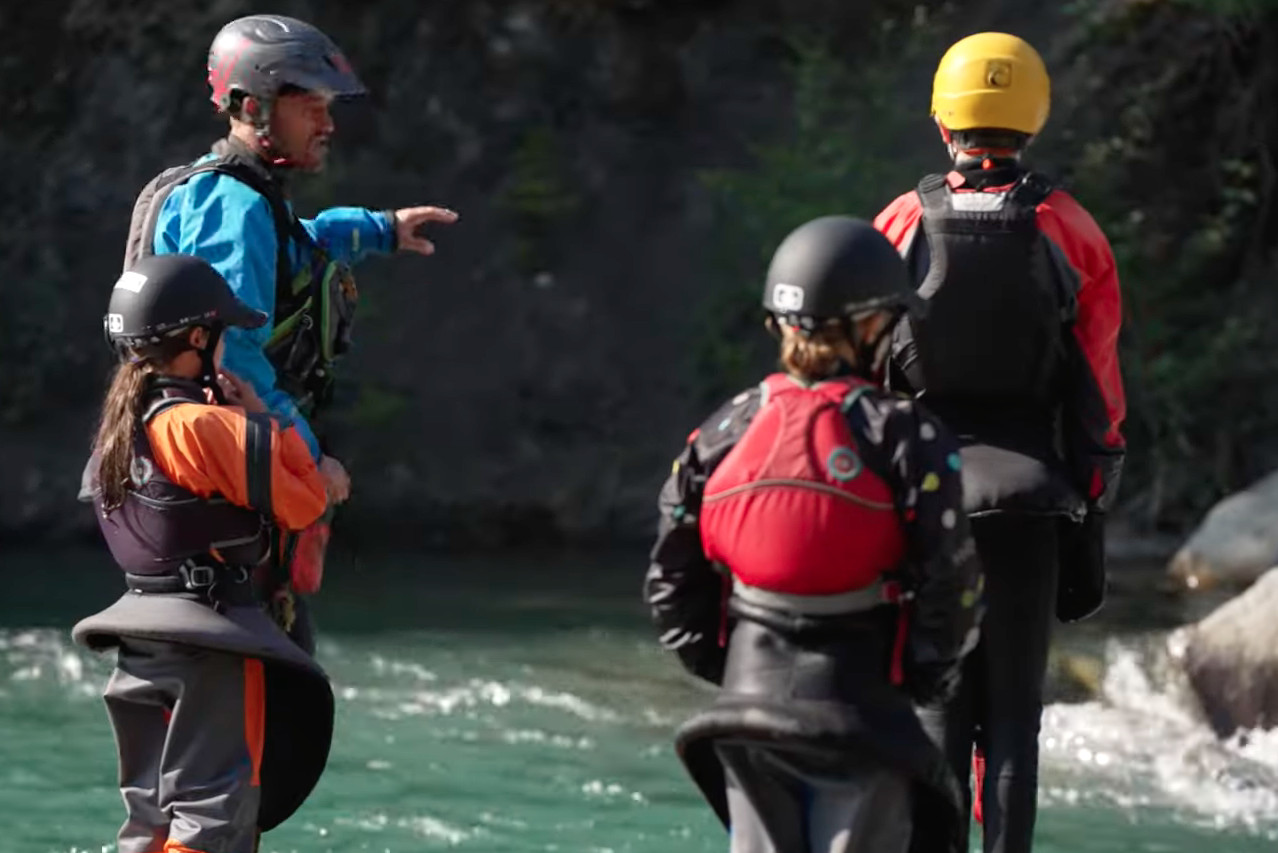
Another aspect of what we’re doing for next year is we’re restructuring our programs. Firstly, tie in regular time off. The outdoor industry has never been good at regular time off. Over the last bunch of years, that’s not been what people want to do. I didn’t embrace that very quickly, to be perfectly honest. I was very much like, work 100 days in a row, go take a month off, go back to work for 100 days. It was that mentality of you’re in the outdoor industry, you work 80 hours a week.
That’s not the case now. People don’t want to do that. And I appreciate it, accept it, and understand it and respect it. It’s just taken me a while to get there. So I think restructuring our program so people are better able to have that work-life balance. They can work hard while they’re working but have time off to pursue their passions. Then they’re not just burnt out from teaching all the time.
We’re working very hard on trying to figure out how to make it a sustainable salary as well. I’ve been teaching kayaking for 20-something years, and I make probably a third of what a first-year ski guide makes if I charge myself out for a day of instructing. You look at that and it’s super inequitable. That’s not right. So we are looking at how we price our programming, how it ties into our retail store, and we are looking at bumping that pay up over the next five years to a point where it’s desirable for people to stick around if they’re willing to put some time in.
Now the challenge is finding people to put into those roles and testing these theories.
PB: That brings us to your recruiting video. Were you finding success or lack thereof in your traditional methods, and how did this lead to the video campaign?
SC: Over the last number of years, [recruiting] very much centered around word of mouth, somewhat tactical social media posting, reaching out to colleagues of mine from over the years, and reaching out to alumni of the outdoor education programs across Canada. Really just trying to spread the web as far as we can. We’ve also tried the traditional websites—the Indeeds and Monsters. But we’ve never had any even remotely qualified people apply through those platforms. So it’s always been a bit of a guerilla campaign through connections, social media, website and newsletter.
So it feels as though we’re casting a big web, but what I feel like is there’s a ton of stuff that’s falling through the cracks. Obviously, it’s not getting in front of the right people. You can keep smashing your head against the wall and expect a different result, which seems a bit crazy. The team chatted and we just went, okay, what could we try and do differently?
We decided the medium of video was a way we could speak to who we are and maybe speak to some of the things we haven’t necessarily nailed in the past. But also discuss what we do very well and hopefully entice people into starting a conversation. It’s more of a three-dimensional medium. It allows you to tell a bit of a story. There’s a narrative around it, and maybe that’s the thing that gets someone going, “They align with my values. That sounds pretty cool.”
We’re in quite a niche industry with a fairly limited pool of talent that you can employ from. We put a bit of time and energy into it, but it was a relatively simple way to try and do something different that would hopefully capture people’s attention.
PB: What does your plan look like for distributing a video recruiting campaign? Who do you hope to reach?
SC: The initial plan was just to release it to the community organically. We started with our email list. I reached out to past employees and past colleagues all over the world to share. Reached out to the industry. So a bunch of our manufacturers shared it through their social media channels and everything. When you look at casting that net, it’s pretty large. You’re looking at some of the key manufacturers who have 70,000 followers on their social media platforms. It’s an international reach versus our more Canadian reach. So that’s how we started out.
The next step is using Google to create targeted profiles. So if you look at people with an interest in whitewater kayaking in these particular areas and etc., it narrows it down. Then this would show as the ad video at the start of a YouTube video.
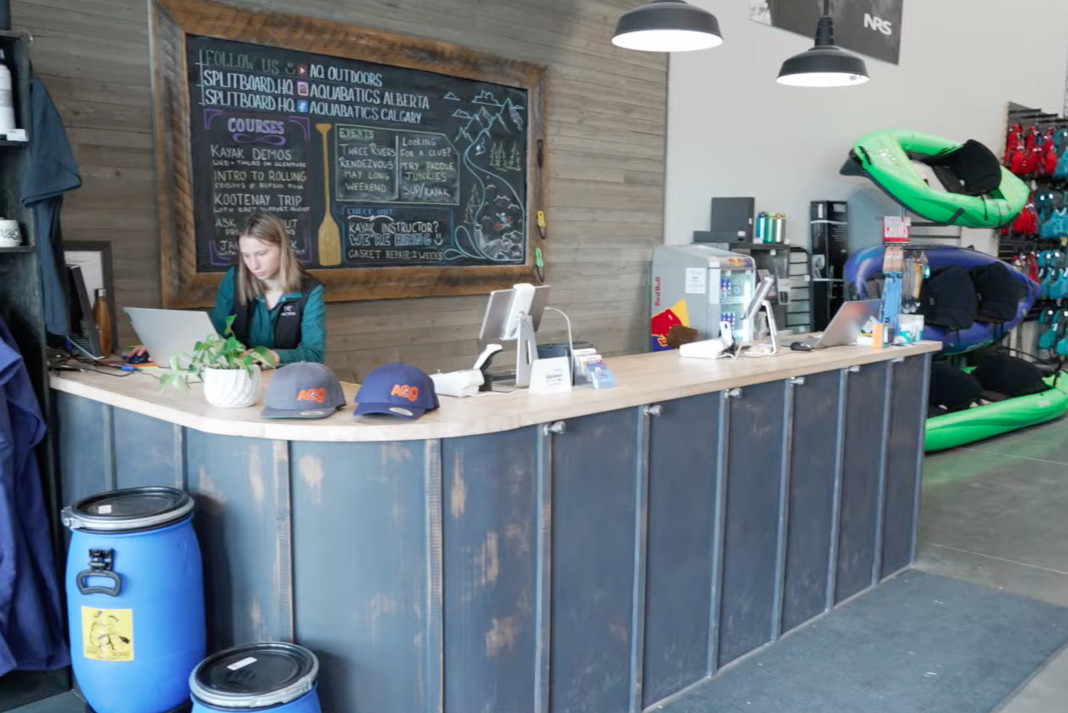
What we’re trying to do in this next step will be to invest a little bit of money and see if we can expand that web outside of all the connections that we have as a business or as individuals into a larger community. Maybe that’s where we find the right people or person. Once you find one or two key people who align with your values and are stoked on it and feel they’re benefiting from it, then they’re much more inclined to reach out to their network. If you can get into different networks, it just expands our network because we’ve had fantastic relationships with all of our staff.
This will be the first time that we actually put any kind of marketing budget into advertising for instructors, which is not something I ever thought I would see because it was always so easy back in the day.
PB: What do you sense it is about video that makes it stand out as a unique and potentially successful medium of today for finding your future paddling instructors?
SC: I’m not really a social media guy, but whenever I go on there you are just bombarded with information. We have these supercomputers in our hands. It’s so hard to get through the noise. Video is easily digestible, and it ties to the demographic of people we’re looking to work with us. It tends to be younger people. The format of visual media is what they’ve grown up with, and I think they’re much more likely the potential employees to say, “This is worth watching. I’m not gonna skip this ad, or I’m going to open this newsletter,” rather than reading a traditional job advertisement.
You can make it more eye-catching than a traditional job post. And it’s easily shareable. You make one that’s less than a minute long, and you post it on Instagram and you’re in that network. Then you have a slightly longer form that goes on Facebook, and you have the YouTube-embedded one which goes in your newsletter. So there are all these different ways you can approach it from a marketing standpoint. And you are marketing yourself. It’s a competitive job market and you want to try to capture people’s attention in a really positive way.
PB: From your experience thus far what is key to the potential success of video recruiting?
SC: Video is a great medium if you do it properly. It doesn’t mean it has to have high production value. It just has to be authentic and speak to who you are as an organization. If you go out and say something about yourself and then get a bunch of people applying, employ them, and don’t actually offer what you’re marketing, then you’re back to square one again. Authenticity is the key.
Learn more about what working with AQ Outdoors looks like.



